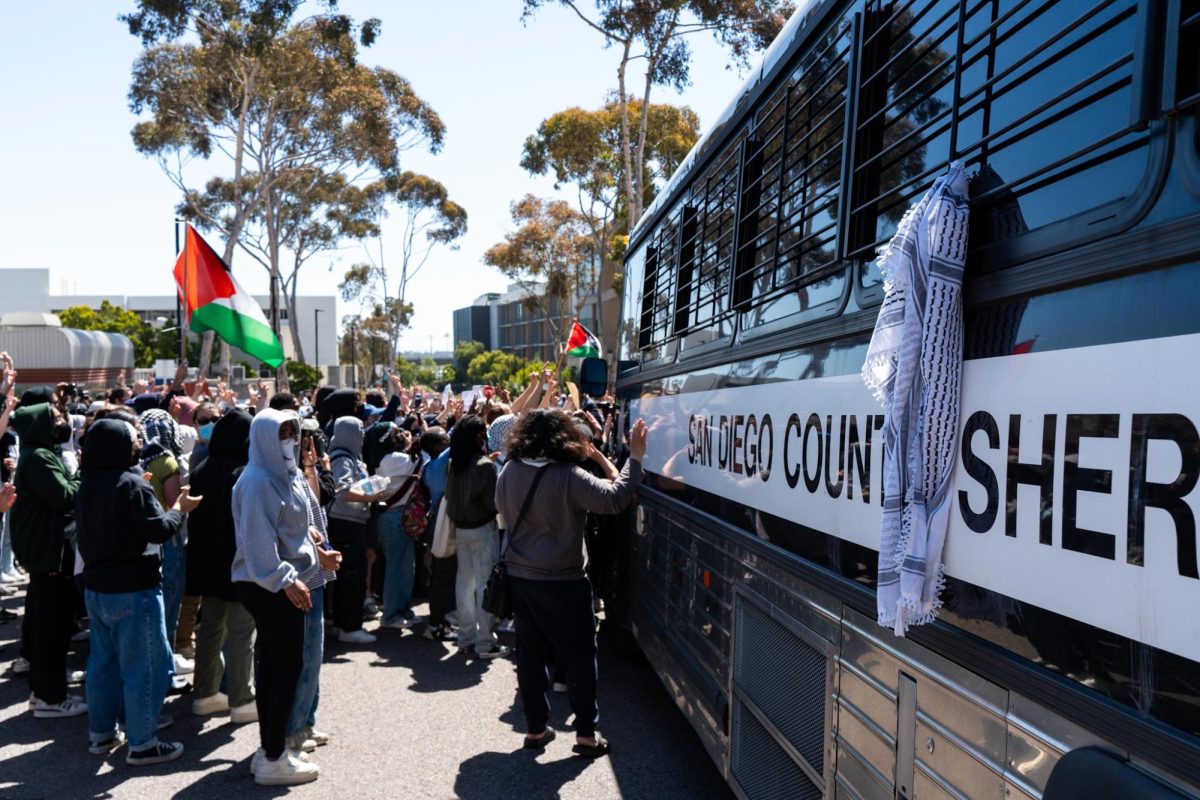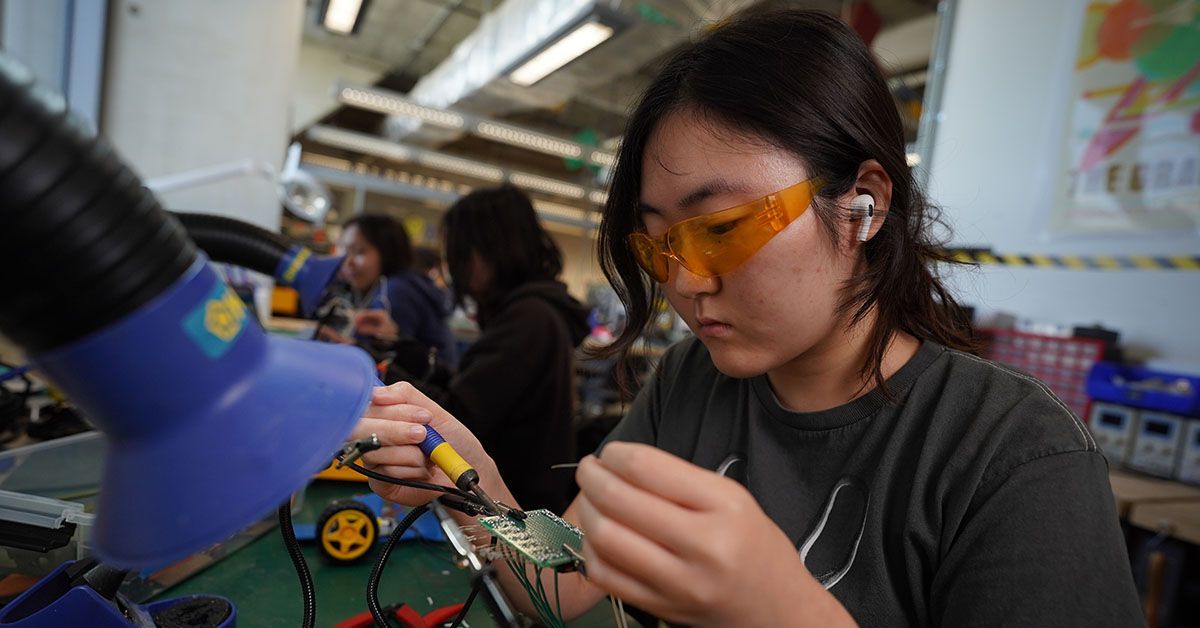Public diversity promotion is failing to match the actuality of Black students’ experiences on campus.
2.2% of students at UC San Diego are Black or African American. The majority of the student population is either Asian or White, which composes 50.6% of the campus.
Being such a small fraction on campus, Black students face the dilemma of both macro and micro aggressions. This is a dilemma that’s exacerbated because the remainder of the population on campus is significantly different.
As detailed in a report by the University of Maryland, racial microaggressions can be categorized into subgroups. Focusing on vocal aggression, subgroups include themes such as color blindness and individuals being aliens in their own land.
Color blindness entails statements meant to indicate a person’s denial of race being a societal attribute. The concept of “Alien in their own Land” involves statements that assume an individual is foreign-born based on their race or ethnicity.
In a BMC Psychology study, 219 students were surveyed on their experiences with microaggressions on their college campuses. One of the report’s conclusions mentioned that young Black women all emphasized thesexualization of their racial and physical features as exotic.
Racial microaggressions are too familiar to Black students, as expressed in an interview with an anonymous student, who will be referred to as Marissa.*
Marissa recalled a moment where her hair was the center of attention for her suite. She normally keeps her hair in braids, but she has to take her braids out at times, which reveals her natural afro-style hair.
She recalled how her suitemates began to pet her hair with some going to the extent of taking photos of her hair. Marissa described the moment as strange since she was both uncomfortable and felt as if she was an animal in a zoo.
Throughout the year, Marissa was referred to as “nice looking for a Black girl” and was also asked “how do you feel being at UCSD as a Black girl?” by white male students. It took her months to accept this treatment from others.
Microaggressions are subtle forms of racism acted in an unnamed nature which makes them hard to identify, rectify, and quantify. Although classified as unnamed in nature, acts of racial aggressions towards Black students are prevalent on a macro level as well.
In an interview with another anonymous student, Riley, racial aggression is exemplified to be more than unnamed nature.*
Riley lived in a suite where slurs directed towards Black individuals were spoken around casually. Weeks after the first confrontation, one of Riley’s suitemates began to make comments on the smell and look of Black individuals, to which they approached their suitemate with frustration.
Following that altercation, the suitemate reported Riley to Residential Life, claiming that they were threatening him and owned a gun. After telling their story, Riley said:
“I don’t own a gun, I’m 19. I understand that you’re racist, but that doesn’t mean I have some type of inclination to hurt you.”
Although not able to share specific details about the incident under FERPA, UC San Diego Office of Communications offered this statement to The UCSD Guardian:
“We affirm each individual’s right to dignity and strive to maintain a climate of justice marked by mutual respect for each other. The university takes allegations very seriously.”
Riley was directed by ResLife officials to a different housing location. Although physically away from the problem, they expressed their frustration in this statement.
“It made me realize that this is such a big reason why I am living off campus next year. The faculty are [f—— s—] with every part of UCSD,” they said.
The prevalence of both micro and macro aggressions towards Black students seems to go unrecognized by not only students, but university officials as well.
In an interview, the traditions co-coordinator for the Black Student Union, Damanza Uzor, reflected on UCSD’s promotional motto.
“Diversity, equity, and inclusion. That’s what we hear, but the university is not doing much to manifest that statement,” he said.
Furthermore, Uzor referred to the motto as “empty terminology.” Rather, the university seems to have used the small presence of Black students on campus to promote diversity.
When asked if expectations are being met by the university, Uzor responded with this statement.
“Realistically, no. It feels like we’re just here and the university isn’t really looking to do more than that.”
Allyson “Kida” Bradley, the director of Triton Lobby Corps, substantiated this statement. In an interview with The Guardian, Kida referred to the lack of meeting the expectations of Black students by the absence of hair inclusivity.
Located in Price Center, Salon 101 serves as the only hair salon on campus but can’t service Black students with afro-textured hair. Although considered less important to other students, Kida voices this example as being important within the Black community.
“I think once we [establish a Black salon on campus] we’ll be able to boost enrollments for Black students but also show a real physical community space where Black people can feel comfortable in,” she said.
Personally, Kida said that she doesn’t feel comfortable on campus as a Black woman. She recognizes the fact that UCSD has failed to appropriately acknowledge a racist past, specifically with the 2010 Compton cookout incident.
On a macro scale, Kida explains that the failure to acknowledge such a disappointing event in UCSD’s history shows how the university attempts to push the conversation aside rather than finding a remedy with its past.
The significance of ignoring such an event was also brought up in an interview with Kennedy Cofield, a member on the board of the Black Student Union.
Cofieldexplained how the 2010 incident has been mentioned in meetings with university officials, but little was done after the fact. The situation seemed to be brushed off by UCSD administrators.
After being asked about the connection between the university and Black students, Cofield referred to the 2021 Black Graduation where Chancellor Kholsa didn’t make an appearance. Rather, the Chancellor pre-recorded a video for Black graduates.
“What he was saying, it seemed not from the heart type thing. It seemed like a generic statement,” she said.
Further, Kennedy mentioned how the noticeable disconnection between UCSD and Black students can defer Black applicants.
The gap to close between UCSD and Black students is a gap that will take effort, from students to professional staff. When asked how students can participate in the closing of this social gap, Kida said::
“Never stop consuming historical knowledge. It can develop your self-awareness about micro or macro aggressions you may be pushing, but it also helps with overall intelligence.”
With intelligence comes action. Cofield advises the university to shed more of a spotlight on Black students and Black excellence, especially during Black History Month.
In their 2022 demands, the Black Student Union is pushing for more funding, retention, and recruitment with their motto being “Community Building & Wellness”.
As for students who want to be a part of this social change, Uzor leaves us with this statement:
“Afford yourself the same respect you afford other people. When people aren’t giving you that standard, you have to demand that standard or nothing is going to change”.
*Editor’s Note: Due to safety concerns, this article features two students who were granted anonymity by request.
Image Courtesy of Michelle Deng














mapquest driving directions • Dec 26, 2022 at 8:48 pm
Studies have consistently shown that public diversity promotion does not work to reduce racism on campus. In fact, it can actually lead to it. public diversity promotion is often used to create a sense of diversity on campus, but this often does not reflect the actual diversity of the students.
Blake • Nov 22, 2022 at 7:50 pm
Black and White Americans should have equal treatment, especially in education. Bullying should stop now.
Learn more at https://maps.google.com/?cid=9428639819260061146
Cheers.
fnf mods • Nov 14, 2022 at 7:09 pm
Please continue to offer further content in the form of a blog. This website is now bookmarked in my browser so that I may continue to remain in contact with you.
Correction • Nov 8, 2022 at 1:26 pm
Your data are incorrect. Check the UC Institutional Research site for more updated numbers. In Fall 2021 – Black students make up 3% of the total (graduate+undergraduate population).
The largest other groups are (in order): Asian (33.8%), White (20.1%), and Hispanic (18.4%). Asian and White would be 54%. Of course, that does not include the 21.3% of the school that is international.
Janna • Nov 1, 2022 at 6:16 pm
Black students at predominantly white institutions report everything from instances of thinly veiled racism, homophobia, and sexism to outright racial hostility and intimidation. Experiencing such incidents has consequences that go well beyond feeling uncomfortable.
Best regards from https://maps.google.com/?cid=4446793793755782886
Emma • Oct 26, 2022 at 4:10 am
It seems to me completely unacceptable that in the modern world this problem is still relevant. Still need to talk about equal rights. Instead of spending a lot more time learning what really matters. During my studies, the only problem was writing assignments. And now they can be transferred to services like this https://myonlineessay.com/